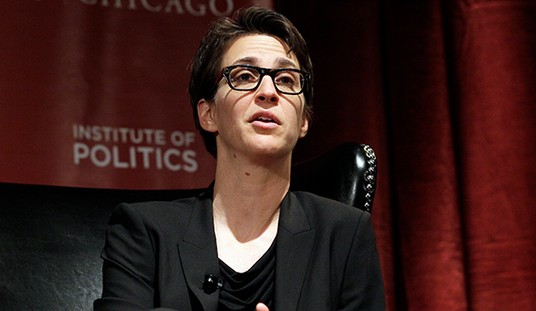We can put the conspiracy theories to rest. After Donald Trump tweeted out “Really Good Jobs Numbers” yesterday, critics accused him of unfairly accessing the official jobs report from the BLS. The actual jobs report for August shows a third straight month of declining job growth, although it does have better news on wages:
Total nonfarm payroll employment rose by 130,000 in August, and the unemployment rate was unchanged at 3.7 percent, the U.S. Bureau of Labor Statistics reported today. Employment in federal government rose, largely reflecting the hiring of temporary workers for the 2020 Census. Notable job gains also occurred in health care and financial activities, while mining lost jobs. …
In August, the unemployment rate was 3.7 percent for the third month in a row, and the number of unemployed persons was essentially unchanged at 6.0 million. (See table A-1.) …
The labor force participation rate edged up to 63.2 percent in August but has shown little change, on net, thus far this year. The employment-population ratio, at 60.9 percent, also edged up over the month and is up by 0.6 percentage point over the year. (See table A-1.)
Those aren’t “really good” numbers, and we haven’t had “really good” numbers for most of the year. Only one month has exceeded 200K jobs added, and that was six months earlier in February. This chart from the BLS shows the 2019 trend and the contrast to 2018’s more robust job creation:

The 130K level barely keeps pace with population growth. It doesn’t help matters that the previous two months got revised downward in this report by 20,000 jobs combined. The three-month average is now at a mediocre 156,000 per month. It would be quite a bit lower without government hiring for the upcoming census, which accounts for 36,000 jobs in August.
On top of that, more people are going into part-time work due to a lack of full-time job opportunities:
The number of persons employed part time for economic reasons (sometimes referred to as involuntary part-time workers) increased by 397,000 to 4.4 million in August; this increase follows a decline of similar magnitude in July. These individuals, who would have preferred full-time employment, were working part time because their hours had been reduced or they were unable to find full-time jobs.
This is why friends don’t let friends rely on the ADP employment report, which was what Trump used for his “really good” assessment of job creation. ADP’s 195K projection in the private sector missed by 100,000. The ADP survey isn’t a reliable indicator of official BLS numbers, and not even a reliable indicator of their direction. It has its uses, but the wisest course of action is always to wait for the official numbers — which we can pretty much confirm Trump never saw.
It was a miss on Wall Street too, which expected to see 150,000 jobs added. However, the report does have a bright spot on wages:
The increase fell short of Wall Street estimates for 150,000, while the unemployment rate stayed at 3.7%, as expected. An alternative measure of the jobless rate, which includes discouraged and underemployed workers, increased to 7.2% from 7% in July, due mainly to a 397,000 increase in those working part-time for economic reasons.
Wage growth remained solid, with average hourly earnings increasing by 0.4% for the month and 3.2% over the year; both numbers were one-tenth of a percentage point better than expected.
Labor force participation also increased, rising to 63.2% and tying its highest level since August 2013. The total number of Americans considered employed surged by 590,000 to a record 157.9 million, according to the household survey, which is conducted separately from the headline establishment count.
The upward pressure on wages and hours is good news, but don’t forget that both are usually lagging indicators. It also might show that employers are balking at expansion out of uncertainty, using existing employees to get more work done while seeing which way the economic winds are blowing. The sharp decline in job creation in 2019 will erode that pressure to maintain higher wages if it continues for much longer.
This is not the kind of job growth that Trump needs to see going into an election year. It’s also not bad enough to deflect him from his course on China and trade, where his trade war seems to be finally paying off in negotiations with Beijing. The faster that gets resolved the better, but Trump still has some room as long as wages keep growing and jobs don’t flip over into the red with regard to population growth. That line is getting closer, though, and the White House should be getting nervous about it.








Join the conversation as a VIP Member